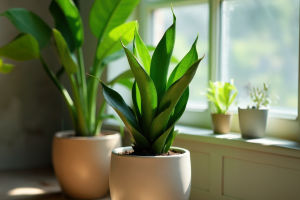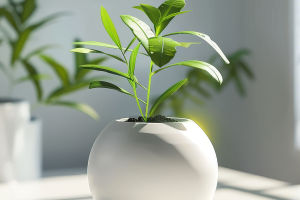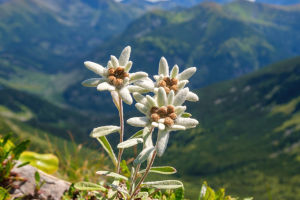Have you ever brought home a beautiful succulent only to watch it slowly shrivel or turn to mush within weeks?
You're not alone! Many plant lovers assume that succulents are impossible to harm— yet they're among the most misunderstood houseplants.
The good news is: once you understand their specific needs, keeping succulents alive becomes not only possible but easy and enjoyable.
Understanding the Nature of Succulents
Succulents are drought-tolerant plants that store water in their thick, fleshy leaves and stems. Originating from dry climates like deserts, they're built to survive in tough environments. But when brought indoors or overwatered, they often suffer. To keep them thriving, you need to mimic their natural environment as closely as possible — less water, more light, and good airflow.
Choosing the Right Succulent
Not all succulents are created equal. Some are more beginner-friendly than others. If you're just starting, opt for hardy varieties like:
• Echeveria – Rosette-shaped and comes in many colors.
• Aloe vera – Also a natural remedy for skin irritation.
• Haworthia – Compact and great for low-light spots.
• Sedum – Known for its fast growth and resilience.
• Jade plant (Crassula ovata) – A classic indoor succulent with thick, glossy leaves.
Start with these, and you'll have a much easier time learning how to care for succulents without frustration.
Soil Matters More Than You Think
Regular potting soil is a big no-no for succulents. It retains too much moisture and can lead to root rot. Instead, use a cactus or succulent-specific mix that drains quickly. You can also make your own by mixing:
• 2 parts coarse sand or perlite
• 2 parts potting soil
• 1 part small gravel or pumice
This helps excess water drain quickly and mimics the gritty soil succulents love.
Drainage Is Non-Negotiable
One of the top reasons succulents die is poor drainage. Always plant your succulents in containers with drainage holes at the bottom. Never let water sit at the base of the pot. If the container doesn't allow water to escape, roots will suffocate, leading to rot.
A simple trick: after watering, tip the pot slightly to help remove any extra water.
Watering the Right Way
This is where many people go wrong. Succulents don't like frequent watering. Instead, follow the “soak and dry" method: water deeply, then wait until the soil is completely dry before watering again. Depending on the climate, that could mean watering once every 10–14 days indoors.
Tips:
• Stick your finger into the soil. If it feels dry 2 inches down, it's time to water.
• Use room temperature water, and water at the base — not from above the leaves.
• Never mist your succulents; they're not tropical plants and don't benefit from humidity.
Let There Be Light!
Succulents love sunlight, but too much direct sunlight can scorch their leaves, especially if they're new or have been indoors for a while. Ideally, place them in a bright spot with indirect sunlight for at least 4–6 hours a day. A south-facing window is usually best.
If you don't get much sunlight, consider using a grow light designed for succulents. They need light to maintain their color, shape, and health.
Watch for Signs of Trouble
Succulents give visual signals when they're unhappy. Learn to read these cues:
• Leaves turning mushy or translucent? Overwatering.
• Leaves wrinkling or shriveling? Underwatering.
• Stretching tall and leggy? Not enough light.
• Yellow or black spots? Possible fungal issue — check for airflow and cut back watering.
By catching these signs early, you can often save the plant before it declines completely.
Repotting and Root Care
Succulents need room to grow, and every year or two, they may outgrow their pots. Spring is the best time to repot. When repotting:
• Choose a pot slightly larger than the current one.
• Gently remove old soil from the roots.
• Trim any damaged roots.
• Replant using fresh succulent soil.
Let the plant sit for a day before watering to allow root wounds to heal.
Temperature and Airflow
Succulents prefer temperatures between 60°F and 80°F (15°C–27°C). They don't like cold drafts or overly humid rooms. Keep them away from air conditioners, radiators, and bathrooms. Ensure they have good airflow — it helps prevent rot and mildew.
Propagating for Fun and Growth
One of the joys of growing succulents is how easy they are to propagate. Many can grow new plants from leaves or stem cuttings. Simply:
• Gently twist a healthy leaf from the mother plant.
• Let it dry for 1–2 days to form a callus.
• Place it on dry soil and wait.
• Within weeks, roots and new leaves will appear.
It's a satisfying and fun way to multiply your collection!
Final Thoughts: Don't Overlove Your Succulents
Succulents are low-maintenance, but that doesn't mean no maintenance. Most often, people "overlove" their plants with too much attention — especially water. The real secret? Give them what they truly need: light, well-draining soil, and occasional water. That's it.
Are you ready to try again with your succulents? Which types do you love most — or struggle with? Share your experiences, and let's keep learning together as we build our indoor desert gardens, one healthy succulent at a time!


